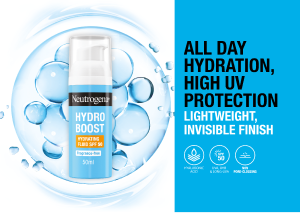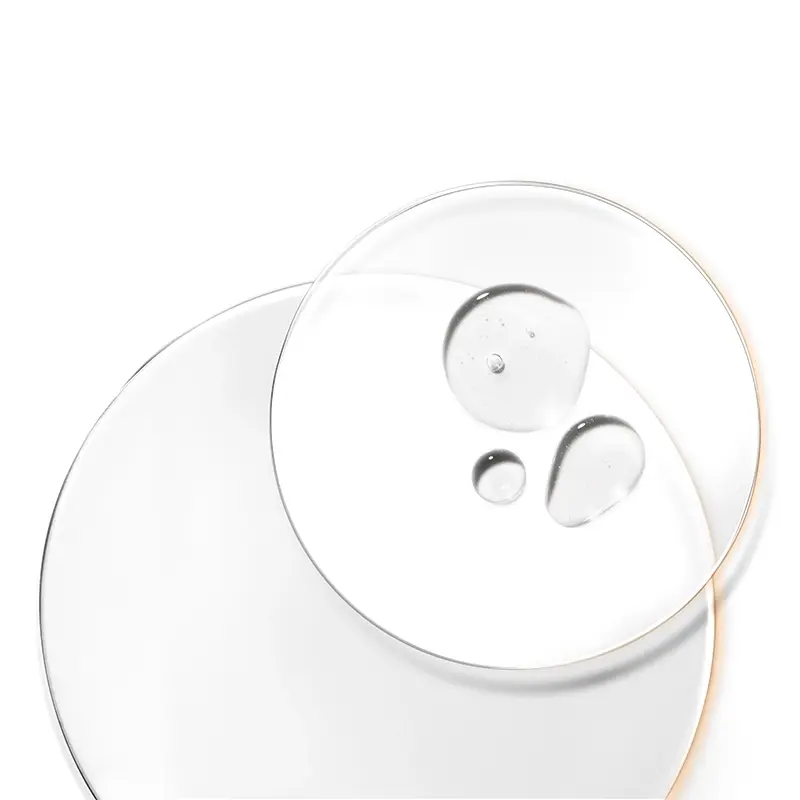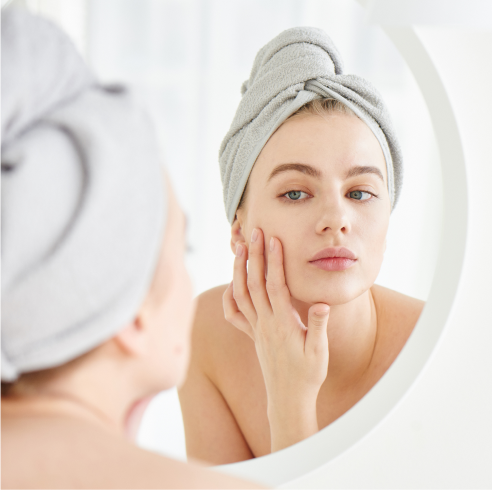Hydration is essential for healthy-looking skin. If you suffer with dehydrated skin, you may be surprised at the difference some simple skin hydration steps can make.
Our skin requires water to retain its strength and elasticity. The skin’s outer layer features a moisture-locking system – called the stratum corneum. This is like a brick wall with layers of dead skin cells all held together by fats called lipids. This helps retain moisture in the skin. However, this barrier doesn’t always work at its best and this can result in dull, dehydrated skin.
If you’re wondering how to hydrate your skin, we’ll provide you with everything you need to know. We’ll be outlining the main causes and signs of skin dehydration and highlight some potential solutions.
In this guide:
What is dehydrated skin?
Skin dehydration occurs when the cells underneath the skin’s outermost layer begin to lose water and dry out. As a result, the cells become shrivelled, which can lead to a dull looking complexion.
It’s important to remember that, although they can have similar symptoms, dehydrated skin is not the same as dry skin. Dry skin occurs when there is a lack of oil to hold in moisture, whereas dehydrated skin doesn’t have enough moisture in the first place. Anyone can experience skin dehydration, including those with oily skin types.
Dry vs dehydrated skin
If you thought dry skin and dehydrated skin are the same, you’re not alone. You may even use the phrases interchangeably when describing skin that lacks glow and lustre. However, when it comes to skincare and the products we use, they’re actually two very different concerns.
The truth is that while all skin can be dehydrated – dehydrated skin is not a skin type. And it’s certainly not something that just us with dry skin have to worry about. Where dry skin is lacking oils and other natural substances – and can be caused by environmental factors like low humidity – dehydrated skin lacks water from the inside. This means that even if you have an oily, blemish-prone complexion, your skin can still be dehydrated.
Due to the similarities between dry and dehydrated skin, you might be tempted to use rich, thick moisturisers to quench the skin. But it’s important not to confuse moisturisation with hydration when dealing with skin that’s lacking in water.
Products which claim to moisturise the skin are designed to help lock in moisture, whereas hydrating products often contain humectants. Humectants are ingredients which attract water from the air, and draw it up from lower layers of skin, meaning they’re intensely moisturising and hydrating.
What does dehydrated skin look like?
Dehydrated skin is common, so you may have suffered from symptoms in the past, without knowing the cause. It’s often dull, deflated, rough in texture, and can show signs of ageing more clearly. You may even notice fine lines and wrinkles appearing more prominently.
Here are some of the most common characteristics of dehydrated skin:
Dull complexion – The lack of moisture can affect the skin’s natural radiance.
Lack of plumpness and elasticity – Hydration deep in the skin is needed to ‘plump’ up skin cells and to give it elasticity.
More noticeable fine lines and wrinkles – Although a natural part of aging, fine lines and wrinkles can be accentuated by dehydration. Hydrating the skin may help to improve the appearance of finer lines.
Sunken eyes and dark circles – When it doesn’t have enough hydration, the skin that surrounds your eyes can pull away from the sockets and create a sunken eye look.
Eyebags – As low moisture levels in the skin can lead to a loss of elasticity, this can result in bags under the eyes.
Itching and cracking – Skin dehydration can also lead to itching and cracking. This is not only uncomfortable but can also end up exposing the skin to bacteria.
What causes dehydrated skin?
External factors and aggressors are among the most common causes of skin dehydration. Things we face every day – like exposure to the sun, air conditioning, central heating, and extreme weather – can all draw out water from our skin and cause it to become dehydrated.
Ultimately, a lack of moisture on the inside is what causes dehydrated skin.
Here are some of the most common causes of dehydrated skin:
Environmental factors – really hot or cold temperatures
Using harsh products on your skin – such as soaps and detergents
Applying rough exfoliators to your skin
Bathing or showering in hot water for too long
Not drinking enough water to keep your body hydrated.
How to hydrate your skin
Now that you know more about dehydrated skin, its signs and what causes it, you can move onto learning how to help alleviate it.
In addition to drinking plenty of water, using products developed specifically for dehydrated skin can be helpful when trying to revive a dull, lacklustre complexion. Your skin is actually the last organ to receive any nutrients you consume, meaning it’s the last to get the water you sip. Therefore, drinking lots of water isn’t always enough and topical products are usually a must if you want to achieve skin that feels comfortably hydrated.
Here are some top tips for how to help alleviate your dehydrated skin:
Adapt your skincare routine
Finding a moisturiser or hydrating mask that works for you can make a huge difference if you’re suffering with dehydrated skin. Moisturisers help to seal water inside the skin cells. Many also contain ingredients to help repair damage to the skin barrier to help prevent further loss of moisture. Meanwhile, products made for hydration help infuse water into the cells beneath the barrier to make them plumper.
It’s important to tailor your skincare routine with products that are best suited to you and your skin type – whether that’s dry, oily, or a combination.
Use products with hyaluronic acid
Products that contain hyaluronic acid are known for their ability to retain water, which can make it a great choice for those with dehydrated skin. Hyaluronic acid is skincare’s super hydrator, capable of holding up to 1,000x its weight in water. Commonly found in products like moisturisers, lotions, and serums, it can also help skin to retain its elasticity and reduce the appearance of fine lines.
The Hydro Boost Water Gel Moisturiser from our Hydro Boost range contains hyaluronic acid and can help to intensely hydrate skin and strengthen the skin moisture barrier. Our Hydro Boost Supercharged Serum also offers an effective way to deliver powerful hydration that instantly energises skin.
Take shorter showers
A long, hot soak might seem relaxing and soothing, but it can wreak havoc on your skin’s moisture levels. Taking long showers or baths with high temperatures can strip away precious moisture from the skin.
It’s recommended to reduce your time in the bath or shower and use lukewarm water instead of hot to keep your skin as hydrated as possible.
Drink plenty of water daily
A great way of taking care of your body from the inside is to drink plenty of water through the day. It may sound like a cliché but drinking water has proven benefits, not just for your skin but for your overall health, including the function of your vital organs.
It’s recommended that you drink between six to eight cups of water each day – with other liquids like milk, tea, coffee, and sugar-free drinks counting too.
Turn on your humidifier on cold days
Low humidity levels in the environment can cause the skin to lose moisture. Indoor heating can also dry out both the air in your home and your skin.
An effective way to counteract this is to invest in a humidifier to use during the winter. These handy devices help to draw moisture back into the air and can help to prevent dry and dehydrated skin caused by environmental factors. For best results, aim for around 50% indoor humidity.







